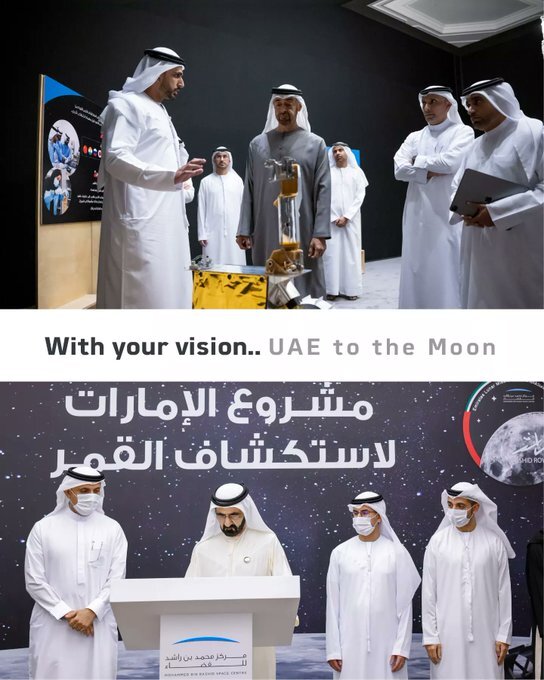A SpaceX Falcon 9 rocket was launched on December 11, 2022, from the Cape Canaveral Space Station in Florida, carrying into space the first-ever Arab-built lunar spacecraft. Dubai’s Mohammed bin Rashid Space Centre (MBRSC) of the United Arab Emirates (UAE) built the Rashid Rover, which is being delivered by the HAKUTO-R lander, engineered by a Japanese lunar exploration company, Ispace. If the rover’s landing on the moon goes well, Hakuto-R will be the first commercial spacecraft to make a controlled landing on the moon.
A low-energy route has been taken by the mission to the moon, and its due arrival is around April 2023. Once the rover reaches the moon, it will spend one lunar day (equivalent to 14.75 days on Earth) on the surface and begin its main operations. The second lunar day will be spent by the rover conducting secondary operations in order to check whether it will survive the tough nighttime environment of the moon before decommissioning.
Scheduled to touch down in the Atlas crater in the northeastern part of the moon, the Rashid river is designed and fabricated to withstand the lunar night, even when the temperature reaches as low as -183°C, or -297.4°F. The Rashid Rover is named after the former ruler of Dubai, the late Sheikh Rashid bin Saeed Al Maktoum. The rover will analyze the plasma on the lunar surface and conduct experiments, particularly to understand more about the lunar dust. The razor-sharp lunar dust particles can stick to and erode equipment and spacesuits, which causes operational problems for astronauts.
The rover is entirely solar-powered and equipped with four cameras, along with a microscopic and thermal one. The launch comes shortly after that of the Artemis I Lunar Mission by NASA and is marked as the first step in the UAE’s ambitious moon exploration program. The Gulf state is further planning to send several vehicles, including rovers and orbiters, to the moon. A second rover is planned to be launched as soon as 2025.
In the year 2017, the construction of the 10 kg Rashid Rover began at MBRSC. It was entirely designed by the Emirati team. Dr. Hamad Al Marzooqi, project manager of the Emirates Lunar Mission at the MBRSC, told me, “The team did a great job in starting the mission and designing it.” The MBRSC is also planning to use the mission to fuel its ambitious plans for a Mars colony. It is also hoping to establish the first human settlement on the Red Planet by 2117. Dr. Al Marzooqi hopes that the lunar surface mission will become a stepping stone to Mars. He goes on to say that they are starting small and hope that this small step will eventually be the starting point for them to reach their goal.









